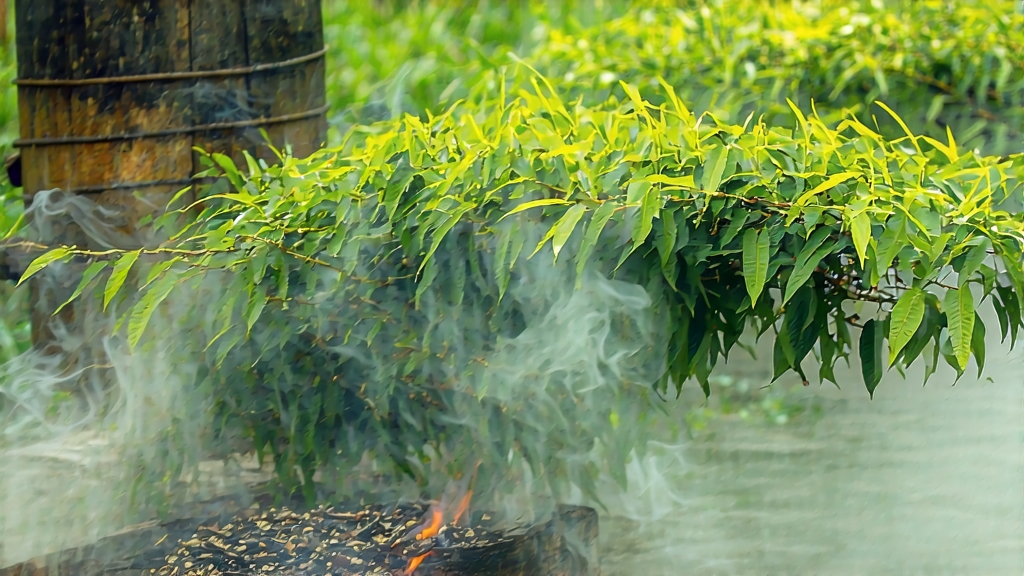
When European tea clippers first rounded the Cape of Good Hope in the mid-seventeenth century, the dark, tightly-twisted leaves they carried from the port of Xiamen were so unfamiliar that Dutch merchants labelled them “bohea,” a corruption of the Fujianese place-name Wuyi. Those leaves were Lapsang Souchong, the earliest black tea ever documented and the prototype for every subsequent red tea (hong cha) produced in China. Today, despite the global fame of Keemun, Dianhong and Jin Jun Mei, it is still Lapsang Souchong that offers the most dramatic portal into the Chinese philosophy of transforming leaf, fire and mountain air into liquid history.
Origin and Terroir
The authentic appellation is strictly limited to the high-altitude core of Tongmu Guan, a protected enclave inside the Wuyi Mountain World Heritage Site in north-west Fujian. Here, the Min River cuts steep granite gorges whose walls trap humid subtropical air. Morning fogs linger until noon, filtering sunlight to a soft amber and forcing the tea bushes—predominantly the small-leaf Xiao Ye Zhai cultivar—to synthesize slowly, accumulating aromatic amino acids and sugars. Night-time temperatures plummet, locking those precursors inside the tender spring buds. The result is a leaf that is naturally low in bitterness and rich in floral lactones, the perfect canvas for smoke.
Two Families, One Leaf
Lapsang Souchong is not a single tea but a stylistic continuum. At one pole stands the traditional Smoke-dried (zheng shan xiao zhong), created expressly for export in the 1640s; at the other, the modern Unsmoked (wu xun xiao zhong), developed after 2005 to satisfy domestic palates that associate pine aroma with cheap barbecue. Both share identical plucking standards—one open leaf with the still-unfurling bud known locally as zhen ya—but diverge completely after withering.
Crafting the Smoke
Plucking begins on the first clear morning after Qingming, when the dew has evaporated but the sun remains gentle. Leaves are loaded onto bamboo trays set above shallow trenches in the second floor of three-hundred-year-old wooden tea houses. Below, embers of local Masson pine and cedar are kept at a smouldering 80 °C; their resinous oils rise through slatted floors, perfuming the leaf for six to eight hours. This cold-smoking phase is followed by rolling under foot-powered wooden cylinders that crack cell walls without pulverizing them, initiating oxidation. Once the leaf turns chestnut-brown and releases a sweet raisin aroma, it is spread into iron woks set over the same pine fire for a final high-temperature drying. The entire cycle—wither, smoke, roll, oxidize, fire—must finish within twenty-four hours before the mountain air cools again, locking the signature campfire note into every strand.
The Unsmoked Style
In 2005 a collective of Tongmu farmers, led by Master Jiang Yuanxun, reversed the process: they eliminated smoke entirely, opting instead for long withering (18 hours at 25 °C), gentle basket-rolling, and low-temperature baking at 60 °C. The aim was to foreground the cultivar’s innate longan-fruit and dried-rose character. The new style, marketed simply as Xiao Ye Zhong, earned instant acclaim in Beijing and Shanghai, fetching prices higher than many rock oolongs. Purists still debate whether it deserves the Lapsang moniker, yet both versions are legally protected under the Tongmu Guan Geographical Indication.
Grading the Leaf
Within each style, four grades are recognised. Superior (te gong) uses only the pre-Qingming bud and first leaf, yielding a liquor the colour of claret with a lingering honey finish. First Grade (yi ji) includes the second leaf, adding briskness. Second Grade (er ji) allows the third leaf, giving a duskier cup suited to milk. Broken (sui cha), produced from leftover flakes, is still cold-smoked and remains the base of many Russian caravan blends.
Chemical Signature
Gas-chromatography reveals that traditional Lapsang owes its aroma to a trio of methoxy-phenols—guaiacol, 4-methyl-guaiacol and syringol—compounds also found in Islay whiskies. Levels peak at 3–5 mg L⁻¹, well below the human bitterness threshold but sufficient to trigger olfactory memories of pine forests. Meanwhile, the unsmoked